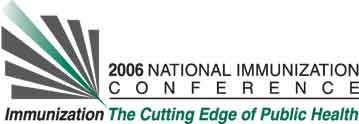Nancy M. Bennett, Monroe County Department of Public Health, 111 Westfall Road, Rochester, NY, USA, Christine E. Long, Center for Rochester's Health, University of Rochester School of Medicine and Dentistry, 601 Elmwood Avenue, Box 689, Rochester, NY, USA, and Sharon Humiston, Emergency Medicine, University of Rochester School of Medicine and Dentistry, Box 655, 601 Elmwood Avenue, Rochester, NY, USA.
Learning Objectives for this Presentation:
By the end of the presentation, participants will be able to:
1. Describe a model collaboration between public health and community health centers (CHCs) to address the flu vaccine shortage in 2004
2. Describe a model using external resources to improve quality in CHCs and urban clinics
3. List three evidence based strategies to eliminate racial disparities in vaccine rates.
Background:
Despite progress in increasing rates of influenza vaccination among seniors, significant racial disparities persist in the U.S. and our community (African-Americans = 39%, Whites = 71%).
Setting:
Seven urban CHCs and hospital clinics in Rochester, NY
Population:
CHC and hospital clinic patients > 65 years in Rochester, NY
Project Description:
Because most seniors receive their vaccines in doctors' offices, the authors recruited seven urban CHCs and hospital clinics to participate in a program to reduce disparities in immunization. Centrally supervised outreach workers used evidence-based methods – Tracking, Reminder/Recall and Outreach (TRO) – to improve vaccine rates for 3752 patients.
In 2003 outreach workers tracked vaccination status for all patients > 65 years, flagged patient records, and performed TRO. In 2004, TRO continued, but half the CHCs had no vaccine. The outreach staff coordinated special clinics administered on-site at the CHCs by community vaccination agencies.
Results/Lessons Learned:
After one year of TRO (2003) the rates were 60% for African-Americans, 68% for Whites, and 51% for Hispanics. In 2004, TRO combined with reallocation of vaccine within the community and special clinics at the CHCs resulted in vaccine rates of 62% for African-Americans, 71% for Whites, and 45% for Hispanics. Despite the adverse vaccine conditions, disparities did not significantly worsen.
Centrally administered, flexible support to CHCs can improve vaccine delivery under the uncertain conditions of annual influenza vaccine supply. Continued engagement and attention to non-white populations in health care settings will reduce disparities.
See more of Posters
See more of The 40th National Immunization Conference (NIC)

